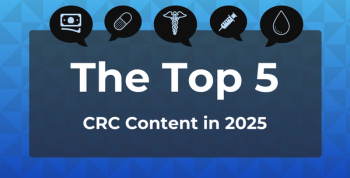
CMS Report Details Extent of Medicare Advantage Racial, Gender Disparities
CMS Tuesday released a report detailing racial, ethnic, and gender disparities in the quality of care received by Medicare Advantage beneficiaries (MA) between 2015 and 2016. CMS said it was releasing the report in recognition of National Minority Health Month, with the aim of raising awareness of health disparities, develop interventions for racially and ethnically diverse Medicare beneficiaries, and implement quality improvement efforts that improve health equity.
CMS Tuesday released a report detailing racial, ethnic, and gender disparities in the quality of care received by Medicare Advantage (MA) beneficiaries between 2015-2016. CMS said it was releasing the report in recognition of National Minority Health Month, with the aim of
The report looked at 27 clinical care measures and 8 patient experience measures. Clinical care describes the extent to which patients receive appropriate screening and treatment for specific health conditions, such as
Patient experience included such things as how easy it is to get needed care, how well doctors communicate with beneficiaries, and how easy it is for beneficiaries to get information from their drug plans about prescription drug coverage and cost.
In 2016, nearly 70% of all MA beneficiaries were whites, 13% were Hispanic, 10.4% were black, 4.1% were Asians or Pacific Islanders, and 0.4% were American Indians or Alaska Natives. About 2.5% were defined as multiracial but were not included in the report. By gender, 56.3% were female and 43.7% were male. Racial and ethnic disparities were more variable for the clinical care measures than for the patient experience measures.
Hispanic beneficiaries received worse clinical care than white beneficiaries for 11 of 27 measures:
- Diabetes care
- Controlling blood pressure
- Continuous beta‐blocker treatment after a heart attack
- Pharmacotherapy management of COPD exacerbation—use of systemic corticosteroids
- Pharmacotherapy management of COPD exacerbation—use of bronchodilators
- Avoiding potentially harmful drug‐disease interactions in elderly patients with chronic renal failure
- Avoiding potentially harmful drug‐disease interactions in elderly patients with dementia
- Avoiding potentially harmful drug‐disease interactions in elderly patients with a history of falls
- Antidepressant medication management—acute phase treatment
- Antidepressant medication management—continuation phase treatment
- Initiation of alcohol or other drug treatments
Hispanics received care of similar quality for 10 measures and better quality for 6 measures.
Black beneficiaries received worse clinical care than whites for 8 measures:
- Diabetes care
- Controlling blood pressure
- Continuous beta‐blocker treatment after a heart attack
- Avoiding potentially harmful drug‐disease interactions in elderly patients with chronic renal failure
- Antidepressant medication management—acute phase treatment
- Antidepressant medication management—continuation phase treatment
- Follow‐up after hospital stay for mental illness (within 7 days of discharge)
- Follow‐up after hospital stay for mental illness (within 30 days of discharge)
Blacks received care of similar quality for 16 measures and better quality for 3 measures than whites. Asian or Pacific Islander beneficiaries received worse clinical care than whites for 3 measures, but received care of similar quality for 13 measures and better quality for 11 measures.
By gender, the quality of care received by women and men was similar. Women and men reported similar experiences of care for all 8 measures of patient experience. Patterns of racial and ethnic differences in patient experience were generally similar among women and men. Among both women and men, Asian and Pacific Islander beneficiaries reported worse experiences than whites beneficiaries for 7 measures and better experiences for 1 measure.
Among women, black beneficiaries reported worse patient experiences than white beneficiaries for 2 measures and similar experiences for 6 measures; among men, black beneficiaries reported worse patient experiences than white beneficiaries for 4 measures and similar experiences for 4 measures.
Among women, Hispanic beneficiaries reported worse patient experiences than white beneficiaries for 3 measures and similar experiences for 5 measures; among men, Hispanic beneficiaries reported worse experiences than white beneficiaries for 4 measures and similar experiences for 4 measures.
The report,
Newsletter
Stay ahead of policy, cost, and value—subscribe to AJMC for expert insights at the intersection of clinical care and health economics.







































